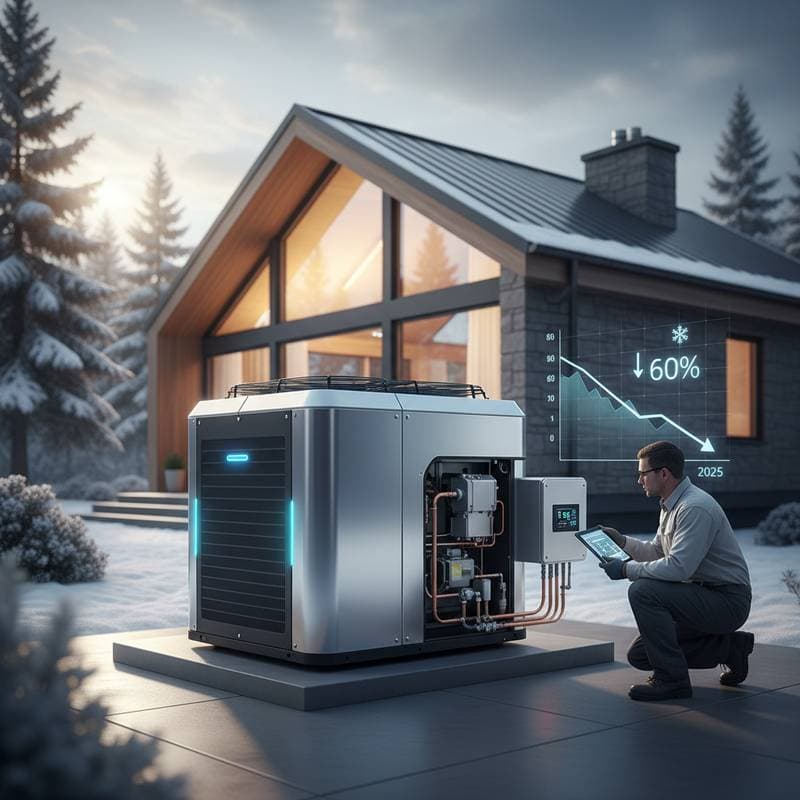Expert Strategies to Lower AC Bills While Keeping Your Home Comfortably Cool
As an HVAC professional with years of experience helping homeowners, I understand the common challenge of balancing comfort with rising utility expenses. You adjust the thermostat for relief from the heat, yet the monthly bill often brings unwelcome surprises. In areas with intense summer temperatures, air conditioning systems work hard to maintain indoor coolness, which can lead to substantial energy consumption. Fortunately, targeted adjustments can reduce waste, improve efficiency, and preserve that refreshing atmosphere you value in your living space.
Understanding the Factors Behind High AC Expenses
Air conditioning typically accounts for the largest portion of summer energy bills, particularly in humid environments where units operate at full capacity. Systems lose efficiency through issues like leaking ducts, dirty filters, or suboptimal thermostat settings, and these problems can increase costs by 20 percent or more. Homeowners sometimes close vents in empty rooms, unaware that this disrupts airflow and places extra strain on the equipment, which results in higher bills and potential breakdowns over time.
Building a Foundation for Reduced Energy Consumption
Success comes from encouraging your air conditioner to operate more intelligently rather than forcing it to run excessively. Based on extensive fieldwork, I suggest concentrating on system maintenance, home sealing, and behavioral adjustments. These elements provide opportunities for quick fixes and more substantial improvements that yield ongoing benefits, and when combined, they can substantially decrease expenses while extending the unit's reliable performance.
Practical Approaches to Enhance Efficiency and Longevity
Start with regular maintenance to keep your system in top condition. Replace or clean air filters every one to two months during peak seasons, as blockages can diminish efficiency by up to 15 percent, and schedule professional inspections that include coil cleaning and refrigerant evaluations to avoid most breakdowns. Additionally, ensure the outdoor unit remains free of debris and vegetation, since obstructions compel the system to expend extra energy.
Strengthen your home's defenses against heat infiltration through better insulation and sealing. Address gaps around windows, doors, and ducts to prevent cooled air from escaping, which directly impacts your bills, and consider adding insulation in attics where coverage is insufficient to shorten cooling cycles. For ducts in uncooled areas, proper wrapping minimizes losses and supports consistent temperatures throughout the house.
Optimize thermostat practices for noticeable savings without discomfort. Increase the setting by a few degrees when you are home and more when away, as even small shifts can reduce costs by 10 percent, and invest in programmable models that align with your routine to automate these changes. Steer clear of extreme adjustments, which often consume more energy than they conserve.
Incorporate supportive routines into your daily life to complement these efforts. Draw blinds during the hottest parts of the day to limit sun exposure, use ceiling fans to circulate air and create a cooling sensation that allows higher thermostat levels, and shift activities like cooking to evening hours to lessen the system's workload.
Evaluating Investments and Safety Measures
Smart thermostats, priced between $150 and $350, often recoup their cost through annual savings of hundreds of dollars. Insulation projects vary from a few hundred to several thousand dollars based on scope, yet they enhance both energy efficiency and overall home comfort. Professional tune-ups, at $100 to $200 each, prove far more economical than emergency repairs that can exceed $1,000.
Prioritize safety by leaving complex tasks, such as handling electrical components or refrigerants, to qualified experts. Simple actions like filter replacements and thermostat tweaks remain accessible for most homeowners. Remember that major upgrades may require permits and adherence to local codes, which ensures compliance and optimal results.
Achieving Sustainable Comfort in Your Home
Reducing air conditioning expenses becomes straightforward when you adopt consistent practices like timely filter changes and leak sealing. These steps, paired with strategic upgrades such as advanced controls, build toward lower bills and a more efficient living environment. Picture returning to a space that feels perfectly tempered, supported by a system that operates smoothly and cost-effectively.
From my perspective as an HVAC specialist, blending everyday adjustments with thoughtful enhancements creates the most effective path to energy savings. If you seek customized advice, connect with trusted professionals via our platform for assessments and quotes that match your home's needs and design preferences.
Frequently Asked Questions
Q: How often should you arrange an AC tune-up?
A: Schedule service twice each year, ideally before cooling and heating seasons begin. This approach can reduce breakdown risks by approximately 80 percent.
Q: Do smart thermostats justify their cost?
A: Absolutely, as they can decrease energy expenses by 10 to 15 percent. Most users recover the investment within one to two years.
Q: What indicates leaking ducts?
A: Look for inconsistent room temperatures, unexpectedly high bills, or increased dust indoors. Professionals use pressure tests to verify issues.
Q: Should you close vents in unoccupied rooms?
A: Avoid this practice, since it causes system imbalances that elevate costs and accelerate wear.
Q: What is the simplest do-it-yourself action for quick bill reductions?
A: Regularly replace your air filter. This easy step boosts efficiency and improves air quality more than any other basic measure.



